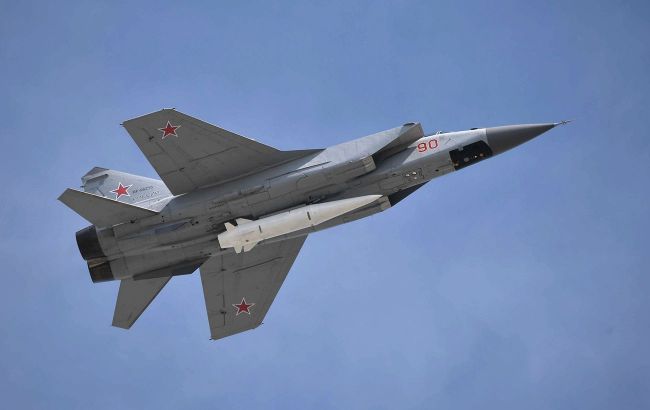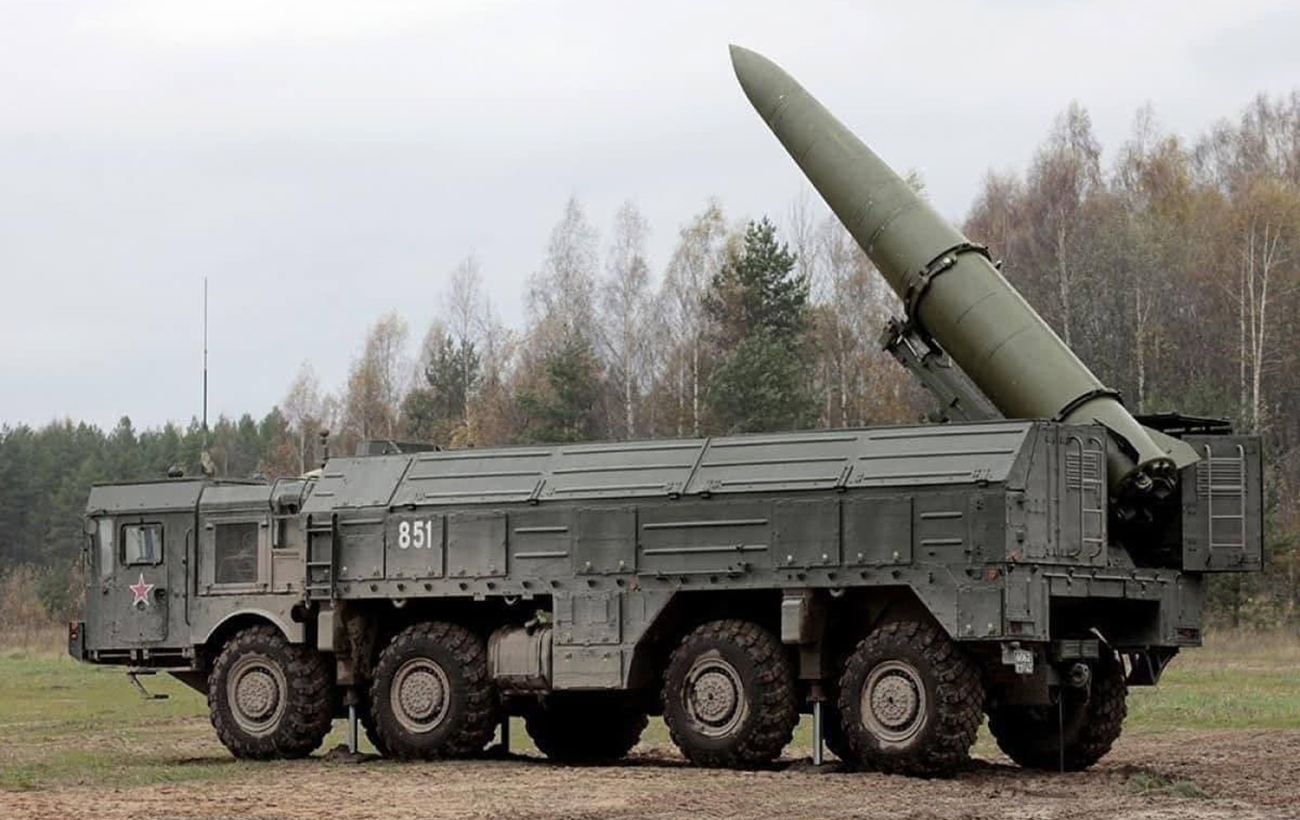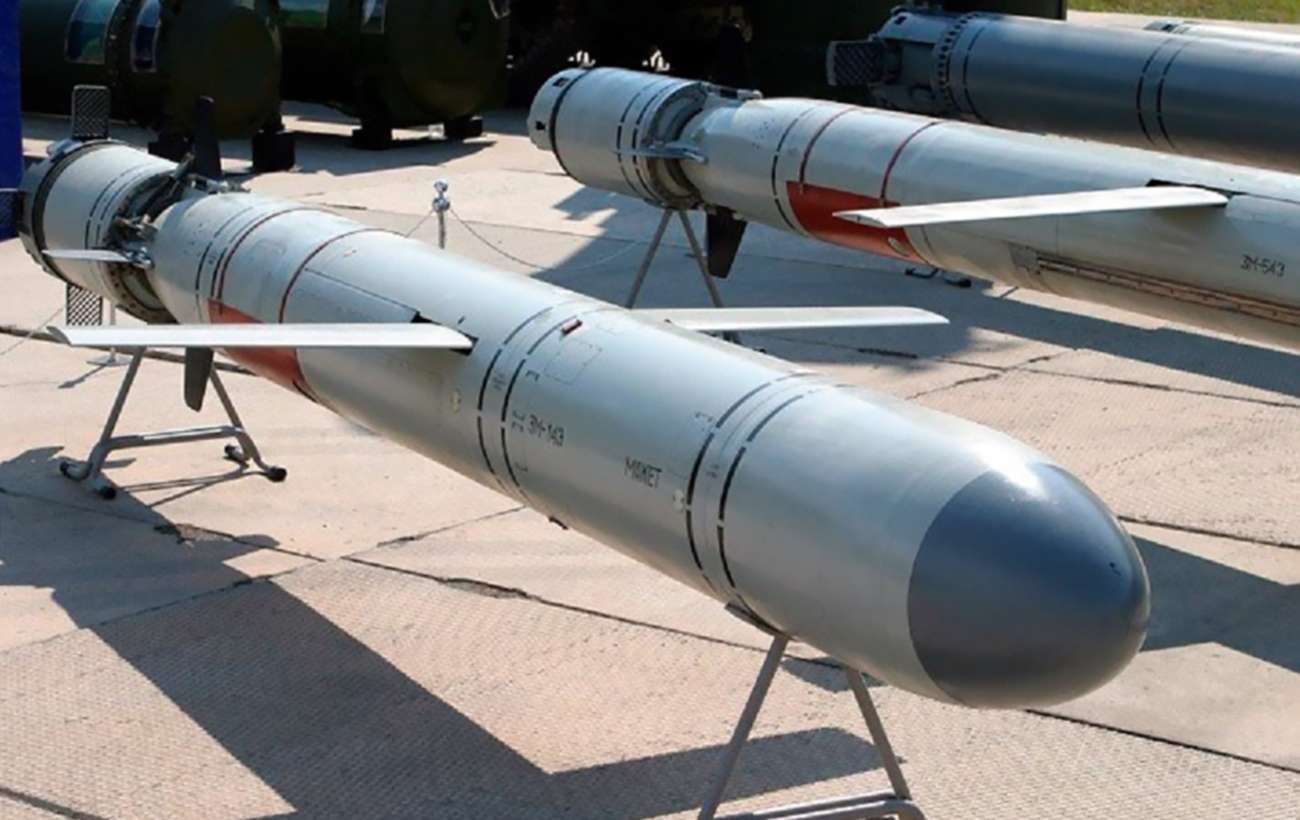Kalibrs, Kinzhals and more: Closer look at Russian missiles targeting Ukraine
 Russian MiG-31K with the Kinzhal air-launched ballistic missile (Photo: wikipedia.org)
Russian MiG-31K with the Kinzhal air-launched ballistic missile (Photo: wikipedia.org)
The Russian Federation has once again carried out a massive missile strike on Ukraine. During the attack on January 2nd, nearly the entire range of missiles, from ballistic to cruise, was employed.
RBC-Ukraine details the usage of Kinzhal, Iskander, and other missiles consistently launched by the enemy against our country.
Sources used for this report include: Ukrainian Air Force data, X posts from Commander-in-Chief of the Armed Forces Valerii Zaluzhnyi, statements from Air Force spokesman Yurii Ihnat, articles from Defense Express, assessments by Forbes, and information from Wikipedia.
On the night of January 2, 2024, the Russians repeated a massive combined attack using various types of aerial assault. This was similar to what occurred a few days earlier on December 29, 2023.
Critical infrastructure, industrial, civilian, and military objects were targeted, primarily focused on Kyiv.
During the first wave at night, Shaheds attacked from the southeast direction, subsequently moving through various regions of Ukraine. All 35 assault drones were destroyed by air defense, with 13 of them destroyed over the capital.
In the morning, the enemy deployed 16 Tu-95MS strategic bombers. Around 06:00, they reached launch positions and launched at least 70 cruise missiles, including the X-101/X-555/X-55 types.
Around 07:30, MiG-31K interceptors launched ten aeroballistic missiles, the X-47M2 Kinzhal. Additionally, the Russians attacked from the sea using three Kalibr cruise missiles and from the north with missiles of the Iskander-M/S-300/S-400 type. Su-35 tactical aircraft struck with four anti-radiation missiles, the X-31P.
Preliminary data indicates a total of 99 missiles of various types. The Ukrainian Air Force, in coordination with defense units, destroyed 72 of them:
- 10 aeroballistic missiles X-47M2 Kinzhal
- 59 cruise missiles X-101/X-555/X-55
- 3 Kalibr cruise missiles
Here is the basic information about the missiles Russia used in today's strikes.
Ballistic missiles: Kinzhal and Iskander-M
X-47M2 Kinzhal is an aeroballistic missile capable of carrying a nuclear payload, adopted into service in 2017. It is likely developed based on the 9K720 Iskander-M.
 Photo: Missile Kinzhal on the MiG-31K fighter (wikimedia.org)
Photo: Missile Kinzhal on the MiG-31K fighter (wikimedia.org)
The missile is often referred to as hypersonic, which is not entirely accurate. Despite ballistic trajectories often reaching hypersonic speeds at certain stages, Kinzhal is neither a hypersonic glider nor a hypersonic cruise missile.
In Russia, it's termed a missile system since launching is impossible without an airborne carrier. Typically, for strikes on Ukraine, the supersonic MiG-31K serves as the carrier. It's believed that after being released at a designated point, the missile reaches speeds exceeding ten times the speed of sound while maneuvering along its trajectory. However, practical application has shown it does not reliably penetrate anti-missile defenses.
Apart from the MiG-31K, the Tu-22M3 strategic bomber can serve as a launch platform. While the fighter can carry one Kinzhal missile, the Tu-22M3 can carry up to three.
Specifications of the missile:
- Declared maximum speed - up to 4080 m/s (14688 km/h)
- Altitude at hypersonic speed - 20 km
- Warhead weight - up to 500 kg
- Maximum striking range - over 2000 km (MiG-31K) and over 3000 km (Tu-22M3)
It has been utilized in the Russian-Ukrainian war since March 2022. The distinctive feature of Kinzhal is its ballistic trajectory, and until spring 2023, Ukraine lacked effective interception capabilities.
The first successful interception report dates back to May 4, 2020. Ukrainian air defense forces intercepted a missile over the Kyiv region using the Patriot air defense system.
"Patriot is capable of intercepting ballistic and aeroballistic missiles, such as Kinzhal. On May 4, the first 'no analog' Kinzhal was intercepted. Subsequently, there were six more, and now we have 15 Kinzhals intercepted by the Patriot system," said Air Force spokesman Yurii Ihnat at the end of 2023.
Today, another 10 units have been successfully intercepted.
"The Ukrainian Air Force, using the Patriot anti-aircraft missile system, intercepted 10 out of 10 Russian aeroballistic missiles X-47M2 Kinzhal. This is a record. If the missiles hit their targets, the consequences will be catastrophic," noted the Commander-in-Chief of the Armed Forces of Ukraine Valerii Zaluzhnyi.
.png)
Photo: Result of Ukrainian air defense on January 2, 2024 (X of Valerii Zaluzhnyi)
Recently, the Russians have been deploying MiG-31K fighters from the Savasleyka airbase in the Nizhny Novgorod region of the Russian Federation. The missiles aimed at Kyiv enter Ukrainian airspace from the Sumy region. Additionally, launch platforms are based at the Mozdok airbase in North Ossetia.
The approximate cost of the Kinzhal missile ranges from 10 to 15 million dollars.
Iskander is a family of operational-tactical missile complexes designed primarily for the destruction of air defense and missile defense systems, as well as fortified objects. There are modifications such as Iskander-K, Iskander-E (for export), and the ballistic Iskander-M.
Characteristics of the ballistic Iskander:
- Range: from 50 to 500 km
- Speed: 2100 m/s
- Warhead weight: 480 kg
- Possible nuclear warhead up to 50 kilotons
Flight altitude: from 6 to 50 km, with most of the flight at maximum altitude.
The missile is guided throughout its flight, hence termed quasi-ballistic. Intercepting is complicated due to intense maneuvers during launch and approaching the target.
 Photo: Operational-tactical complex Iskander (t.me/Tsaplienkо)
Photo: Operational-tactical complex Iskander (t.me/Tsaplienkо)
Russians attack Ukraine with ballistic Iskanders from the north, Rostov, Voronezh regions, and the occupied Crimea. Usually, the targets are in the Kharkiv, Zaporizhzhia, and Dnipro regions. The estimated cost of the missile is 3 million dollars.
S-300/S-400: Surface-to-air missiles for ground strikes
S-300 is a Soviet-era surface-to-air missile system developed during the USSR. It was designed to combat tactical aviation aircraft, cruise, operational-tactical, and ballistic missiles at altitudes of up to 27 km. Over the past decades, it has undergone several modifications, and in 2007, Russia adopted the S-400 complex based on it.
Despite being primarily air defense systems, they have the capability to strike ground targets with certain types of anti-aircraft missiles. They are considered less effective at long distances. However, due to the depletion of precision weapons, Russia actively uses them for strikes against Ukraine.
 Photo: Russian S-400 missile system (doblest.club)
Photo: Russian S-400 missile system (doblest.club)
The exact range of the Soviet S-300 missiles against ground targets is unknown. According to various estimates, it can be up to 110-120 kilometers. They are launched on a ballistic trajectory. The declared range of the S-400 missiles is up to 380 kilometers. The warhead varies from 140 to 180 kilograms.
The launch algorithm in land-to-land mode allows control up to a distance of 40 kilometers. When firing at long distances, accuracy decreases. Therefore, the S-300/S-400 missiles primarily strike in the frontline regions - Zaporizhzhia, Kharkiv, Kostiantynivka, Sloviansk, Kramatorsk, and so on. Apparently, these areas are insufficiently covered by anti-missile defense systems, as there are no reports of intercepting such missiles in the latest updates.
The estimated cost of the S-300 missile is around 2 million dollars.
Air-launched cruise missiles. Kh-101/Kh-555/Kh-55 and Kh-31P
The Kh-101 is a strategic air-launched cruise missile of the air-to-ground class. The launch range is about 5000 kilometers, and the warhead can weigh up to 960 kilograms. The carriers are strategic bombers Tu-160 and Tu-95MS.
It has a combined guidance system: inertial with opto-electronic correction and self-guidance in the final stage. The feature is an unpredictable trajectory, meaning it can change the target after launch.
Other characteristics:
Missile speed - up to 720 kilometers per hour
Total weight - approximately 2400 kilograms
Maximum range - from 3000 to 5500 kilometers
There is a nuclear variant Kh-102
It's considered one of the most technologically advanced Russian missiles, and the cost of the Kh-101 is around 13 million dollars.

Photo: X-31P missile, suspended under a combat aircraft of tactical aviation (Russian media)
It should be noted that the missile is equipped with an active homing head, oriented towards detecting and destroying sources of radio emission from radar systems.
Specifications:
- Range - from 15 to 110 km
- Probable deviation - from 5 to 8 meters
- Flight speed - 600-700 m/s
- Warhead mass - 87 kg
Carriers can be aircraft like Su-24, Su-27, Su-35, MiG-27M, MiG-29K, MiG-35, and others. The cost of one X-31P unit is 0.5 million dollars. According to the Air Force data, the last time Ukraine intercepted such a missile was on the night of December 25, 2023.
Sea-based cruise missiles Kalibr
Kalibr is a family of cruise missiles introduced in 1993. They were primarily developed as armament for submarines and ships. There are versions for launch from combat aircraft and ground installations, but in Ukraine, these missiles are launched by submarines and missile ships from the waters of the Black and Azov Seas.
Kalibr missiles are designed to target ground, maritime, underwater, and surface targets.

Photo: Mockup of the Kalibr missile (zaxid.net)
Characteristics:
- Range against ground targets - 2600 km
- Warhead mass - 450 kg
- Flight altitude - 20 meters above sea level and 50-150 meters above ground
- Speed - up to 240 m/s
Low-altitude flight is an advantage as it complicates anti-aircraft defense operations. However, Ukrainian air defense systems are currently quite effective in intercepting such missiles. During the attack on January 2nd, three out of three units were intercepted.
The cost of the Kalibr missile is estimated at 6.5 million dollars.
***
The Russian Federation conducted two mass missile attacks on Ukraine with a four-day interval. According to Yurii Ihnat, spokesperson for the Air Force, that might be the amount of time needed by the adversary for a new strike.
"To prepare, I think, a few days are enough. If they have certain patterns planned," he mentions. He has added that the question lies in how many missiles Russia will launch next time, as they have long since switched to a non-depleting reserve.
He previously stated that the adversary had up to 900 high-precision long-range missiles left, not including X-59, X-31, X-35, as well as anti-ship Oniks"and S-300 missiles.
Forbes estimates that the attack on December 29 (no fewer than 122 missiles and 38 Shaheds) cost the Russian side between 700 to 750 million dollars. Another approximately 620 million dollars today - for 99 missiles and 35 Shaheds.
Note: The cost estimates used were: X-101 - 13 million dollars, Kalibr - 6.5 million dollars, Iskander - 3 million dollars, Oniks - 1.25 million dollars, X-22 - 1 million dollars, X-55 - 2 million dollars, X-555 - 4 million dollars, X-47 Kinzhal - 15 million dollars, Shahed-136 - 50,000 dollars.
For more information on other missiles used by Russia against Ukraine, read the article "Nuclear warfighter: Key characteristics of Russian Tu-22M3 bomber and Kh-22 'blind' missiles."

